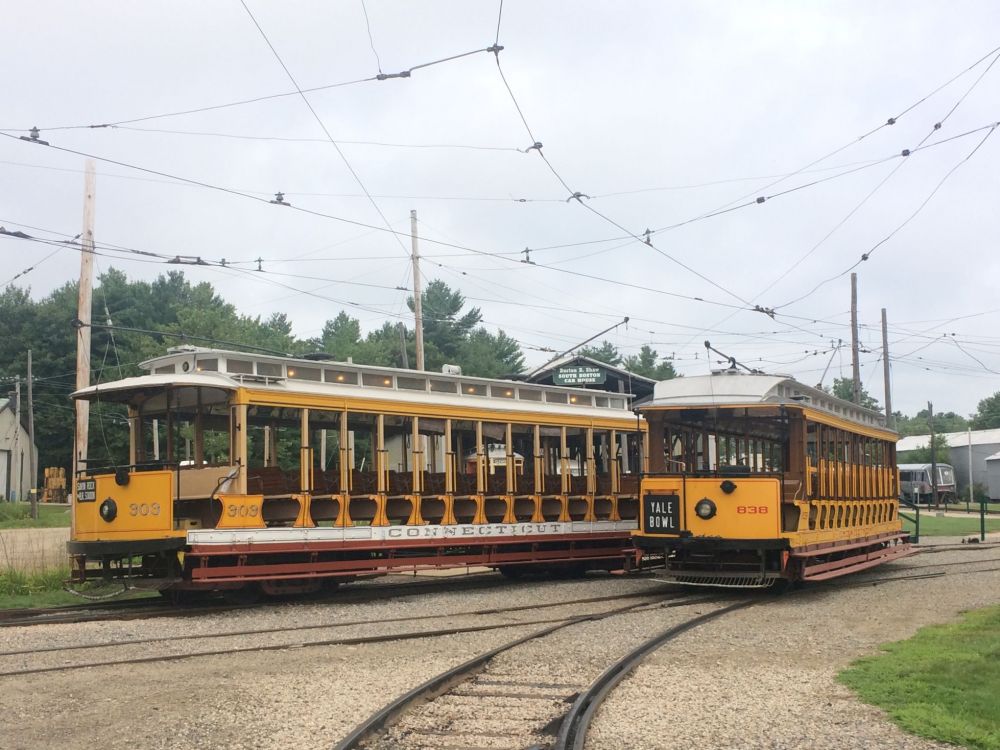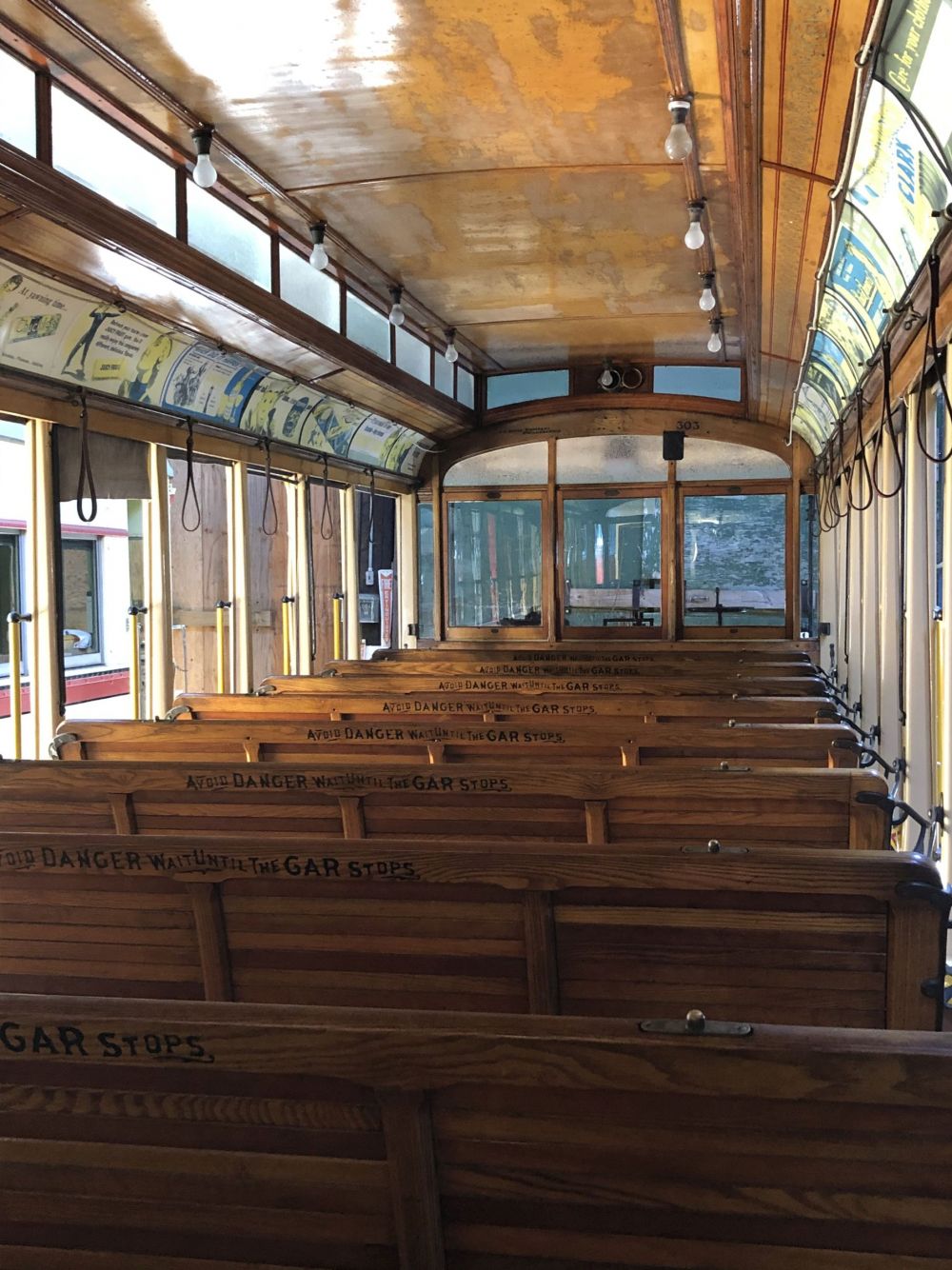
Kenyon F. Karl on 07/22/16
- Builder
- J. G. Brill Co.
- Description
- 15 Bench open car
- Secondary Use
- None
- Type
- City and Suburban Streetcars
- Year
- 1901
- Retired from Service
- 1948
- Acquired by the Museum
- 1948
- Fund
- 639
Connecticut Company 303
From New Haven, Connecticut
History
The Connecticut Company was formed in 1907 by consolidating operating companies in about eight cities in various parts of the state, including Torrington, Hartford, Middletown, Meriden, New Haven, New London, Norwich and Putnam . In addition, another large operator, the Connecticut Railway and Light Co., serving Stamford, Norwalk, Bridgeport, Ansonia-Derby, New Britain and Waterbury was leased. These fourteen cities formed the basis for thirteen operating divisions, each of which maintained its own roster of cars. On August 1, 1915 a new numbering system was introduced by the Connecticut Co. which renumbered all of its cars into a single sequence. Cars from a single order assigned to various divisions were kept together numerically, with a few minor exceptions. For that reason, each of Seashore’s Connecticut Co. cars has had two numbers.
Car 303 was originally purchased by the Winchester Avenue Railroad Co. of New Haven in 1901. Ownership passed to the Consolidated Railway Co. in 1904 and to the Connecticut Co. in 1907. All these companies had ties or were owned by the New York, New Haven & Hartford Railroad. In the general renumbering of 1915 it became car 615. Long after the Connecticut Co. withdrew open cars, such as No. 303/615, from regular service, the company used them in New Haven to shuttle football fans between the railroad station and the Yale Bowl on game days. The open cars also continued operating on excursions to the local beaches and on charter service including fan trips. The Yale service, however, was the reason these cars were not scrapped in the 1930s or earlier when many other systems scrapped their open cars. The last Yale Bowl open cars ran in the 1947 football season, and all New Haven streetcar service ended in 1948. A number of these open cars were donated to museums.
Museum Ownership: The Seashore Trolley Museum acquired four Connecticut Co. open cars (615, 838, 1253 and 1468) . The museum initially moved (under their own power) two of these cars (1468 & 838) to store them at the newly established Branford Electric Railway Association's museum before movement to Kennebunkport. The others were moved directly to Maine. Seashore also helped to move other open cars to the Connecticut Electric Railway Association in East Windsor CT. The Seashore Trolley Museum decided to restore this car as No. 303 to avoid confusion with Portland Railroad single truck Birney No. 615 also at the museum. This also allowed for the use of a more elaborate paint scheme than that used in 1915. (The current paint scheme is of the 1911-1914 period.) The museum also temporarily installed a PK automatic control system on the car about 1970, and removed it in 1996. This involved a plan to operate this car in multiple unit with car 1468, which has never been restored. The Connecticut Company had MU open cars of the 1100 series but there is no evidence that the cars were ever used in MU service. Despite being our oldest 15 bench open car, No. 303 is also the most solidly built. After a fire destroyed No. 1253, Seashore acquired former Connecticut Co. No. 1391, thus maintaining a fleet of four New Haven open cars. Over the years, 303 has been a constant workhorse in the museum's operating fleet.
Technical Information
- Seats: 75
- Control: K-35G
- Brakes: Straight air
- Compressor: D1-EG
Trucks
- Number: 2
- Manufacturer: Standard
- Model: 050
Motor
- Number: 4
- Manufacturer: Westinghouse
- Model: 101
Weight and Dimensions
- Length: 42’
- Width: 10’ 4.00"
- Height: 12’ 8.00"
- Weight: 41000 lbs.
Additional Images

Phil Morse on September 26, 2019

Katie Orlando on 02/08/2020

Katie Orlando on 03/21/20

Roger Sommers
© 1998 - 2026 New England Electric Railway Historical Society. All Rights Reserved.